Opinion & Analysis
Face the facts in putting: Controlling face angle
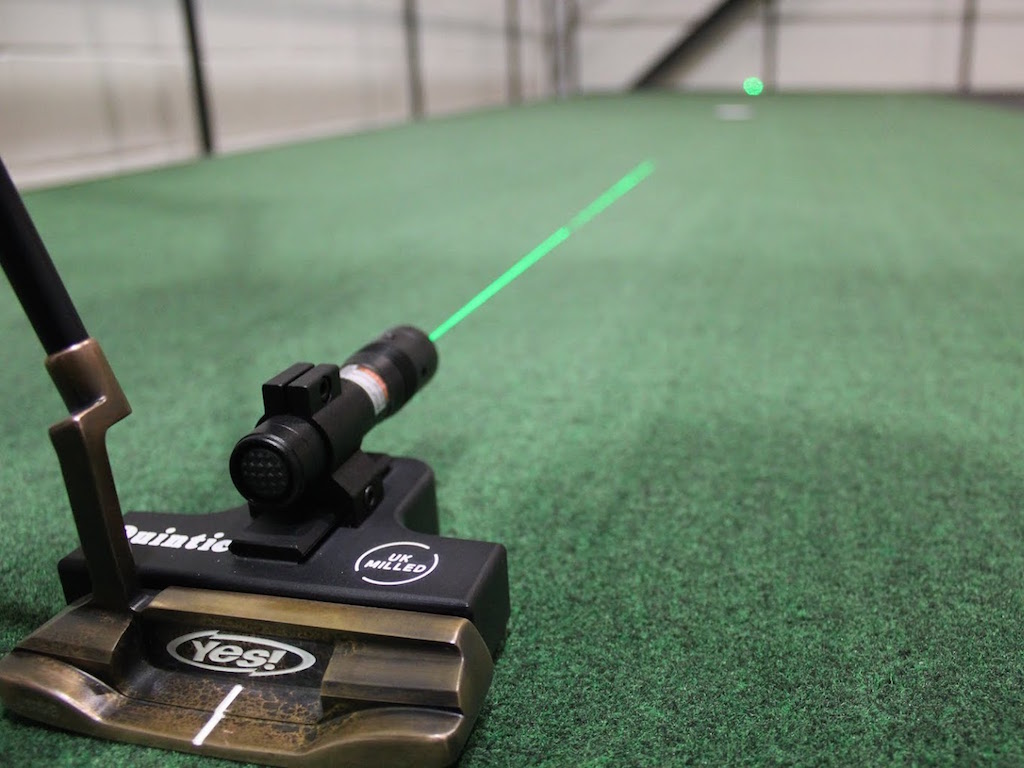
Controlling face angle in putting is a tenacious task. The top players in the world even struggle with this on a daily basis. What about conventional golfers? Can controlling face angle really improve one’s ability to put the ball in the hole?
The short answer is yes, but there are many influencing factors: the style of the putter (face-balanced, plumber-neck, heel-shafted, center-shafted), head weight, posture, alignment, lie and loft, etc. All are factors that can aid a player in controlling face angle, for better or worse!
The purpose of this article is to inform golfers why this is crucial, what to look for when rolling putts and looking for a new putter, and how they can get better.
Note: Through this entire article, we are assuming centered contact with ball and putter head (center mass to center mass). Heel and toe strikes have minimal effect on the direction the ball rolls.
The main purpose of having a square face at impact is to start the ball on your intended start line, but that’s much easier said than done. As the loft on the club gets lower, the more influence face angle has on the direction a ball starts to move or roll. For example, with a 6 iron with a loft of approximately 28 degrees, face angle at impact has a 75 percent effect on the direction the ball launches. The other 25 percent is path. As the loft on the club decreases (i.e. a driver), gear effect aside, face angle has an 85 percent effect. With a putter with a loft of 2 degrees, the influence is greater than 90 percent. This is massive!
A putter face that is open 2 degrees at impact will miss the hole from 5 feet! For a putt to go in at 8 feet, the angle of the face needs to less than 1 degree open or closed to the target. Increase the distance to 15 feet and the putter face needs to less than 0.5 degrees open or closed to the target for the putt to go in. Can you tell the difference between a face angle that is 1-degree closed or open to your target line?
Consider the above statistics. Now consider the PGA Tour average of putts made from inside 5 feet, from 10 feet, and from greater than 10 feet. From the beginning of the 2014/2015 season until now (3.20.2015), here are the best putters from those distances according to PGATour.com.
- Inside 5 feet: Vaughn Taylor — 99.25 percent
- From 10 feet: Jerry Kelly — 71.43 percent
- From greater than 10 feet: John Daly — 22.94 percent
Notice the drop from 10 feet to greater than 10 feet — it’s 48 percent! Remember, a face that is open by 1 degree will miss the hole from 8 feet. This is evidence that face angle outside of 10 feet is unyielding. Outside of 10 feet, most amateur players should focus on getting the proper speed for the putt, but inside 10 feet is where the magic happens. Controlling face angle is what the best players in the world do best.
When selecting a new putter, the style of the putter needs to compliment the style of stroke a player has. That’s why identifying what type of stroke you have is critical.
There are three generalized styles of putting stroke.
- Straight back, straight through: The putter moves in a straight line away from the ball and straight through the ball.
- Minimum Arc: There’s a slight arc to the path of the putter head with minimal face rotation.
- Lots of arc and face rotation: The putter head moves with a noticeable arc and plenty of face rotation.
Golfers who have an arc to their stroke with more face rotation usually prefer or fit into toe-weighted or heel-shafted putters. This gives them more control over face angle at impact.
Golfers with less arc and face rotation generally fit into a plumber’s neck model putter. These putters generally suit strokes with minimal arc and face rotation.
Golfers who like the feel of a “straight-back, straight-through” stroke tend to favor a face-balanced putter. This is a generalized comment, because sometimes different putters feel and perform better to these golfers. Ultimately, the putter should feel comfortable and very natural throughout the stroke. It should also feel very easy to line up to the target.
Checking alignment can be tough to do without a laser or other types of calibrating tools. Typically, most golfers think they are lined up properly, but are not. Using a laser that can sit flush with the putter face is the most accurate way to test this.
Below is an example of how a laser can help identify face angle at address. If your face angle is not square to your target or start line, something would have to change somewhere through the stroke to get the face to square up.
- Face pointed the the right of the target
- Face pointed at the target
- Face pointed to the left of the target
I know some of you are thinking, “What about Billy Mayfair?” Mayfair cut every single putt he made and missed! His face angle was very open at impact during his prime. What he did very well was match his putter’s path to his face angle, so his path, which only has a 10 percent influence, complimented what direction his face was aligned. At Modern Golf, we would never encourage a player to emulate this style of putting. It is too difficult to repeat and adds a ton of cut spin to the roll of the ball. But if a golfer comes to us with this tendency and putts well, there is often no reason for him to change.
One way to work solely of the face angle of your putter at impact is to eliminate path as a variable. Using a putting arc, or a 2×4 piece of wood to run the heel of the putter along to eliminate any path deviation will isolate face angle, but this is only really applicable to short putts. At some point, there should be some arc in a golfer’s stroke.
If you are looking for a quick way to lower your putts on the course, isolate face angle. Work on putts inside 10 feet. These are the ones that have the highest percentage of going in regardless of outside variables. It takes commitment and some extra tools, but it’s one of the quickest way to lower your handicap.
Related
- Part 1: Why everyone can benefit from Quintic
- Part 2: The key to putter fitting? Know your roll
- Part 3: Face the facts in putting — Controlling face angle
- LIKE107
- LEGIT25
- WOW19
- LOL4
- IDHT1
- FLOP2
- OB1
- SHANK9
19th Hole
Vincenzi’s 2024 Zurich Classic of New Orleans betting preview

The PGA TOUR heads to New Orleans to play the 2023 Zurich Classic of New Orleans. In a welcome change from the usual stroke play, the Zurich Classic is a team event. On Thursday and Saturday, the teams play best ball, and on Friday and Sunday the teams play alternate shot.
TPC Louisiana is a par 72 that measures 7,425 yards. The course features some short par 4s and plenty of water and bunkers, which makes for a lot of exciting risk/reward scenarios for competitors. Pete Dye designed the course in 2004 specifically for the Zurich Classic, although the event didn’t make its debut until 2007 because of Hurricane Katrina.
Coming off of the Masters and a signature event in consecutive weeks, the field this week is a step down, and understandably so. Many of the world’s top players will be using this time to rest after a busy stretch.
However, there are some interesting teams this season with some stars making surprise appearances in the team event. Some notable teams include Patrick Cantlay and Xander Schauffele, Rory McIlroy and Shane Lowry, Collin Morikawa and Kurt Kitayama, Will Zalatoris and Sahith Theegala as well as a few Canadian teams, Nick Taylor and Adam Hadwin and Taylor Pendrith and Corey Conners.
Past Winners at TPC Louisiana
- 2023: Riley/Hardy (-30)
- 2022: Cantlay/Schauffele (-29)
- 2021: Leishman/Smith (-20)
- 2019: Palmer/Rahm (-26)
- 2018: Horschel/Piercy (-22)
- 2017: Blixt/Smith (-27)
2024 Zurich Classic of New Orleans Picks
Tom Hoge/Maverick McNealy +2500 (DraftKings)
Tom Hoge is coming off of a solid T18 finish at the RBC Heritage and finished T13 at last year’s Zurich Classic alongside Harris English.
This season, Hoge is having one of his best years on Tour in terms of Strokes Gained: Approach. In his last 24 rounds, the only player to top him on the category is Scottie Scheffler. Hoge has been solid on Pete Dye designs, ranking 28th in the field over his past 36 rounds.
McNealy is also having a solid season. He’s finished T6 at the Waste Management Phoenix Open and T9 at the PLAYERS Championship. He recently started working with world renowned swing coach, Butch Harmon, and its seemingly paid dividends in 2024.
Keith Mitchell/Joel Dahmen +4000 (DraftKings)
Keith Mitchell is having a fantastic season, finishing in the top-20 of five of his past seven starts on Tour. Most recently, Mitchell finished T14 at the Valero Texas Open and gained a whopping 6.0 strokes off the tee. He finished 6th at last year’s Zurich Classic.
Joel Dahmen is having a resurgent year and has been dialed in with his irons. He also has a T11 finish at the PLAYERS Championship at TPC Sawgrass which is another Pete Dye track. With Mitchell’s length and Dahmen’s ability to put it close with his short irons, the Mitchell/Dahmen combination will be dangerous this week.
Taylor Moore/Matt NeSmith +6500 (DraftKings)
Taylor Moore has quickly developed into one of the more consistent players on Tour. He’s finished in the top-20 in three of his past four starts, including a very impressive showing at The Masters, finishing T20. He’s also finished T4 at this event in consecutive seasons alongside Matt NeSmith.
NeSmith isn’t having a great 2024, but has seemed to elevate his game in this format. He finished T26 at Pete Dye’s TPC Sawgrass, which gives the 30-year-old something to build off of. NeSmith is also a great putter on Bermudagrass, which could help elevate Moore’s ball striking prowess.
- LIKE6
- LEGIT3
- WOW1
- LOL0
- IDHT0
- FLOP3
- OB1
- SHANK1
19th Hole
Vincenzi’s 2024 LIV Adelaide betting preview: Cam Smith ready for big week down under

After having four of the top twelve players on the leaderboard at The Masters, LIV Golf is set for their fifth event of the season: LIV Adelaide.
For both LIV fans and golf fans in Australia, LIV Adelaide is one of the most anticipated events of the year. With 35,000 people expected to attend each day of the tournament, the Grange Golf Club will be crawling with fans who are passionate about the sport of golf. The 12th hole, better known as “the watering hole”, is sure to have the rowdiest of the fans cheering after a long day of drinking some Leishman Lager.
The Grange Golf Club is a par-72 that measures 6,946 yards. The course features minimal resistance, as golfers went extremely low last season. In 2023, Talor Gooch shot consecutive rounds of 62 on Thursday and Friday, giving himself a gigantic cushion heading into championship Sunday. Things got tight for a while, but in the end, the Oklahoma State product was able to hold off The Crushers’ Anirban Lahiri for a three-shot victory.
The Four Aces won the team competition with the Range Goats finishing second.
*All Images Courtesy of LIV Golf*
Past Winners at LIV Adelaide
- 2023: Talor Gooch (-19)
Stat Leaders Through LIV Miami
Green in Regulation
- Richard Bland
- Jon Rahm
- Paul Casey
Fairways Hit
- Abraham Ancer
- Graeme McDowell
- Henrik Stenson
Driving Distance
- Bryson DeChambeau
- Joaquin Niemann
- Dean Burmester
Putting
- Cameron Smith
- Louis Oosthuizen
- Matt Jones
2024 LIV Adelaide Picks
Cameron Smith +1400 (DraftKings)
When I pulled up the odds for LIV Adelaide, I was more than a little surprised to see multiple golfers listed ahead of Cameron Smith on the betting board. A few starts ago, Cam finished runner-up at LIV Hong Kong, which is a golf course that absolutely suits his eye. Augusta National in another course that Smith could roll out of bed and finish in the top-ten at, and he did so two weeks ago at The Masters, finishing T6.
At Augusta, he gained strokes on the field on approach, off the tee (slightly), and of course, around the green and putting. Smith able to get in the mix at a major championship despite coming into the week feeling under the weather tells me that his game is once again rounding into form.
The Grange Golf Club is another course that undoubtedly suits the Australian. Smith is obviously incredibly comfortable playing in front of the Aussie faithful and has won three Australian PGA Championship’s. The course is very short and will allow Smith to play conservative off the tee, mitigating his most glaring weakness. With birdies available all over the golf course, there’s a chance the event turns into a putting contest, and there’s no one on the planet I’d rather have in one of those than Cam Smith.

Louis Oosthuizen +2200 (DraftKings)
Louis Oosthuizen has simply been one of the best players on LIV in the 2024 seas0n. The South African has finished in the top-10 on the LIV leaderboard in three of his five starts, with his best coming in Jeddah, where he finished T2. Perhaps more impressively, Oosthuizen finished T7 at LIV Miami, which took place at Doral’s “Blue Monster”, an absolutely massive golf course. Given that Louis is on the shorter side in terms of distance off the tee, his ability to play well in Miami shows how dialed he is with the irons this season.
In addition to the LIV finishes, Oosthuizen won back-to-back starts on the DP World Tour in December at the Alfred Dunhill Championship and the Mauritus Open. He also finished runner-up at the end of February in the International Series Oman. The 41-year-old has been one of the most consistent performers of 2024, regardless of tour.
For the season, Louis ranks 4th on LIV in birdies made, T9 in fairways hit and first in putting. He ranks 32nd in driving distance, but that won’t be an issue at this short course. Last season, he finished T11 at the event, but was in decent position going into the final round but fell back after shooting 70 while the rest of the field went low. This season, Oosthuizen comes into the event in peak form, and the course should be a perfect fit for his smooth swing and hot putter this week.

- LIKE12
- LEGIT3
- WOW0
- LOL1
- IDHT0
- FLOP1
- OB1
- SHANK1
Opinion & Analysis
The Wedge Guy: What really makes a wedge work? Part 1

Of all the clubs in our bags, wedges are almost always the simplest in construction and, therefore, the easiest to analyze what might make one work differently from another if you know what to look for.
Wedges are a lot less mysterious than drivers, of course, as the major brands are working with a lot of “pixie dust” inside these modern marvels. That’s carrying over more to irons now, with so many new models featuring internal multi-material technologies, and almost all of them having a “badge” or insert in the back to allow more complex graphics while hiding the actual distribution of mass.
But when it comes to wedges, most on the market today are still single pieces of molded steel, either cast or forged into that shape. So, if you look closely at where the mass is distributed, it’s pretty clear how that wedge is going to perform.
To start, because of their wider soles, the majority of the mass of almost any wedge is along the bottom third of the clubhead. So, the best wedge shots are always those hit between the 2nd and 5th grooves so that more mass is directly behind that impact. Elite tour professionals practice incessantly to learn to do that consistently, wearing out a spot about the size of a penny right there. If impact moves higher than that, the face is dramatically thinner, so smash factor is compromised significantly, which reduces the overall distance the ball will fly.
Every one of us, tour players included, knows that maddening shot that we feel a bit high on the face and it doesn’t go anywhere, it’s not your fault.
If your wedges show a wear pattern the size of a silver dollar, and centered above the 3rd or 4th groove, you are not getting anywhere near the same performance from shot to shot. Robot testing proves impact even two to three grooves higher in the face can cause distance loss of up to 35 to 55 feet with modern ‘tour design’ wedges.
In addition, as impact moves above the center of mass, the golf club principle of gear effect causes the ball to fly higher with less spin. Think of modern drivers for a minute. The “holy grail” of driving is high launch and low spin, and the driver engineers are pulling out all stops to get the mass as low in the clubhead as possible to optimize this combination.
Where is all the mass in your wedges? Low. So, disregarding the higher lofts, wedges “want” to launch the ball high with low spin – exactly the opposite of what good wedge play requires penetrating ball flight with high spin.
While almost all major brand wedges have begun putting a tiny bit more thickness in the top portion of the clubhead, conventional and modern ‘tour design’ wedges perform pretty much like they always have. Elite players learn to hit those crisp, spinny penetrating wedge shots by spending lots of practice time learning to consistently make contact low in the face.
So, what about grooves and face texture?
Grooves on any club can only do so much, and no one has any material advantage here. The USGA tightly defines what we manufacturers can do with grooves and face texture, and modern manufacturing techniques allow all of us to push those limits ever closer. And we all do. End of story.
Then there’s the topic of bounce and grinds, the most complex and confusing part of the wedge formula. Many top brands offer a complex array of sole configurations, all of them admittedly specialized to a particular kind of lie or turf conditions, and/or a particular divot pattern.
But if you don’t play the same turf all the time, and make the same size divot on every swing, how would you ever figure this out?
The only way is to take any wedge you are considering and play it a few rounds, hitting all the shots you face and observing the results. There’s simply no other way.
So, hopefully this will inspire a lively conversation in our comments section, and I’ll chime in to answer any questions you might have.
And next week, I’ll dive into the rest of the wedge formula. Yes, shafts, grips and specifications are essential, too.
- LIKE32
- LEGIT7
- WOW1
- LOL1
- IDHT2
- FLOP3
- OB1
- SHANK3
-

 19th Hole2 weeks ago
19th Hole2 weeks agoDave Portnoy places monstrous outright bet for the 2024 Masters
-

 19th Hole2 weeks ago
19th Hole2 weeks agoTiger Woods arrives at 2024 Masters equipped with a putter that may surprise you
-

 19th Hole1 day ago
19th Hole1 day ago‘Absolutely crazy’ – Major champ lays into Patrick Cantlay over his decision on final hole of RBC Heritage
-

 19th Hole3 weeks ago
19th Hole3 weeks agoReport: Tiger Woods has ‘eliminated sex’ in preparation for the 2024 Masters
-

 19th Hole1 week ago
19th Hole1 week agoTwo star names reportedly blanked Jon Rahm all week at the Masters
-

 19th Hole1 week ago
19th Hole1 week agoReport: LIV Golf identifies latest star name they hope to sign to breakaway tour
-

 19th Hole1 week ago
19th Hole1 week agoNeal Shipley presser ends in awkward fashion after reporter claims Tiger handed him note on 8th fairway
-

 19th Hole1 day ago
19th Hole1 day agoJustin Thomas on the equipment choice of Scottie Scheffler that he thinks is ‘weird’

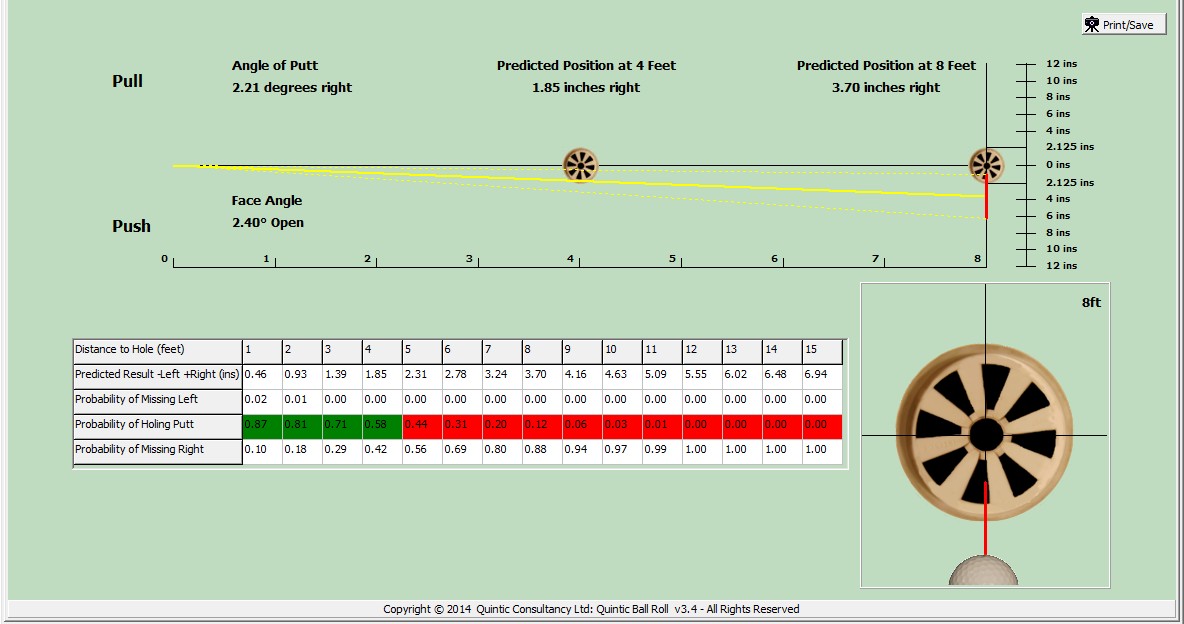
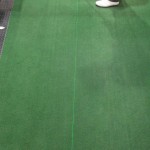
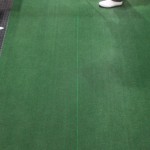
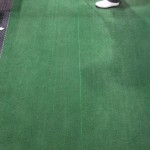
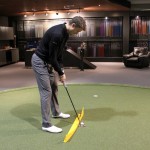
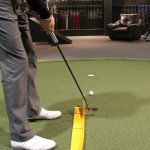














Pingback: How to Improve Your Putting
Samual Puttington
Apr 1, 2015 at 6:35 pm
HEY MODERN GOLF, what are the stats for people returning the face at impact to what they had at address? Pretty low, right? So then why so concerned with adjusting the address position to have a face pointed directly at the target when very few will return the putter face to that angle? Fir for stroke. Edel has it wrong.
Modern Golf Staff
Apr 2, 2015 at 7:08 pm
It’s all about creating consistency. It’s important to see where the alignment issue is (aligned left or right of target) and getting the player to feel and see the difference. If we can create a more consistent face angle at impact the player will develop more feel for distance and line.
AJ Jensen
Apr 1, 2015 at 4:22 pm
Good article for sure. The main takeaway for me though is the idea that my driver is more sensitive to face angle than are the weaker clubs. This explains all the times I’ve KNOWN my driver’s swing path was correct at-and-after ball impact, yet my shot quickly took off on a lateral arc to the left or right
lef
Apr 1, 2015 at 11:27 am
Lie angle is critical in the discussion and not brought up here. The amount of arc in the putting stroke is strong dictated by lie angle. When you set a putter down flat it tells you its natural arc. This is why It’s virtually impossible to truly putt straight back and straight through because putters don’t have a zero degree lie angle. I’ve been playing a face balanced centershafted putter for a decade with a moderately arcing stroke due to its lie. When I use a heal shafted toe heavy putter with the same lie angle and shaft length and weight I feel almost no difference. But if I use any style of putter with a different lie angle I immediately adopt the natural arc of that putter. If you want to feel the face closing find a putter with a longish shaft and a shallow lie. Its a much stronger effect than toe weight in my opinion.
Brutus
Apr 1, 2015 at 11:25 am
It has been shown that without a doubt a putter path cannot move straight back and thru without the handle moving back linearly and maintaining it’s exact relative location to the head (i.e. hovering right over it as it slides back, speed of movement, etc…) Any variance between the 2 immediately introduces 2 arcs on 2 planes. Arc 1 as it lifts up the lowest point to the ground at address while swinging back. Even if it comes up a 1/2″, that’s an arc. And arc 2 as it swings inside (or outside) a straight path back. This is created as the putter head moves farther and faster than the handle and has to arc in the process. An analysis of Nicklaus’ stroke as he used to hunch way over and piston like pump his putt was close to straight back and through but still produced those 2 arcs inevitably.
I bought that yellow swing path trainer your set of pictures show. It’s from Butch Harmon who developed Tiger into a putting force using this method in the early 2000’s. (See putting tips from Jim Flick and Butch in Golf Digest articles from 9/09 and 5/13 issues as they describe the Inside and Down the Line technique Butch teaches and this aid develops). I rarely think a new training device will give me 10% more driving distance or whatever, but I know practicing with this increased me putting from inside 10 feet to the tune of 3 to 4 less putts a round. I saw it in my scores and handicap improvement.
Phil
Mar 31, 2015 at 5:02 pm
I am a heavily left eye dominant, right handed golfer. I constantly fight aiming too far right of target as my eyes are telling me I am aiming too far left. This results in me A trusting it and putting a good stroke on or B pushing the putt cos after the back swing my brain forces me to push the ball where my eyes think it should be going. I have been trying to use a ping ketsch with slight arc but am continually missing right. A return to my yes Morgan (Napa) type blade fixes this but I really want the ketsch to work as so much more forgiving…
Mike
Apr 1, 2015 at 12:37 pm
Try a putter with less offset (center shafted to 1/2). If you are like me (left eye dominate playing right handed golf), I aim better with a center shafted or at most a 1/2 offset putter. When I grab a 3/4 to full offset putter I aim too far to the left of target.
talljohn777
Apr 1, 2015 at 1:38 pm
I have had the same issue. Put a line on your ball, get behind your intended line and using both your eyes binocularly place the ball on your intended line with the line on the ball matching up with your intended line of putt, then step into your putt with the putter lining up with the line on your ball, now your putter is correctly aimed on your intended line, stroke the ball, make the putt.
Rick Wright
Mar 31, 2015 at 4:40 pm
LASER OPTICS is actually the original putter alignment laser. My patented technology (US only) has been around for over 15 years. In 2013, I upgraded to a high power green laser, which can be seen prominently outdoors. I further changed the design allowing for the instructor/user to trace the aim line on the putting surface. This change allows assessment of alignment on straight or breaking putts from any length. Hurrion approached me at the 2014 PGA Show with the desire to have me develop an alignment laser specifically for the Quintic Ball Roll System. After prototypes were provided I never heard from him again. Although, I see he didn’t bother to change the shape of the laser base. Oh well, that’s the golf industry for you.
M
Mar 31, 2015 at 3:02 pm
Modern Golf – What if you have natural aiming tendencies due to eye dominance, etc? Wouldn’t changing a person to aim directly at the hole (if they are slightly off) cause their eyes and proprioception to send conflicting messages? How many professional golfers actual aim within the hole at 10 feet or more?
Modern Golf Staff
Apr 2, 2015 at 6:52 pm
This is not a what if, everyone has a dominant eye and tendencies due to this. The key is to find a putter that is easier to line up. Right eye dominant players have an easier time lining up putters with left offset. Also, they tend to have an open stance to their target to see the line better. using a laser will help identify what direction the alignment is off.
Golf professionals struggle with this as well. They are human! The difference is they know their tendencies and have a good feel for alignment. outside of 10 feet the best putters in the world are making just over 20% of their putts.
Paul
Mar 31, 2015 at 12:56 pm
I use a plumbers neck ping anser style putter. I have a slight arc.
I often feel like I have to grip the putter firmly to stop the face closing over, which produces pulls if I leave it to go. Should I be using a face balanced putter?
M
Mar 31, 2015 at 2:59 pm
No you should be using a putter with more arc to allow the face to open more on the backswing. Then you won’t feel like you have to stop the putter from releasing.
Try a Shea H or a Zing and see if it feels like you can release the putter more freely.
Rick Wright
Mar 31, 2015 at 5:43 pm
A putter does not create arc, the golfer does. With a couple of friends/colleagues I have developed the math which will plot an individual’s signature path based upon set up, posture, and relationship to ball position. If the golfer’s path does not match the projected path (usually due to preconceived notions), there is manipulation. The brain can typically manage small degrees of manipulation, but greater degrees can result in accuracy, impact, and ultimately, distance control issues.
talljohn777
Apr 1, 2015 at 1:43 pm
And why are you not sharing the information with the rest of the golf world???
Tiger Hoods
Apr 1, 2015 at 6:37 pm
Every putter has a rotational value that is engineered into the design. If that value doesn’t fit the rotational requirement of the golfer the golfer will feel off. I learned that from a great instructor at puttertalk.com
Modern Golf Staff
Apr 2, 2015 at 6:25 pm
Interesting Rick! We would love to chat more regarding the applied math. Maybe this is something we can implement here at Modern Golf.
Stretch
Apr 4, 2015 at 11:17 am
Nicely stated Rick. The manipulation is what leads to yippy strokes. The root cause of the manipulation is having the eyes aligned differently to the intended line the ball needs to roll on.